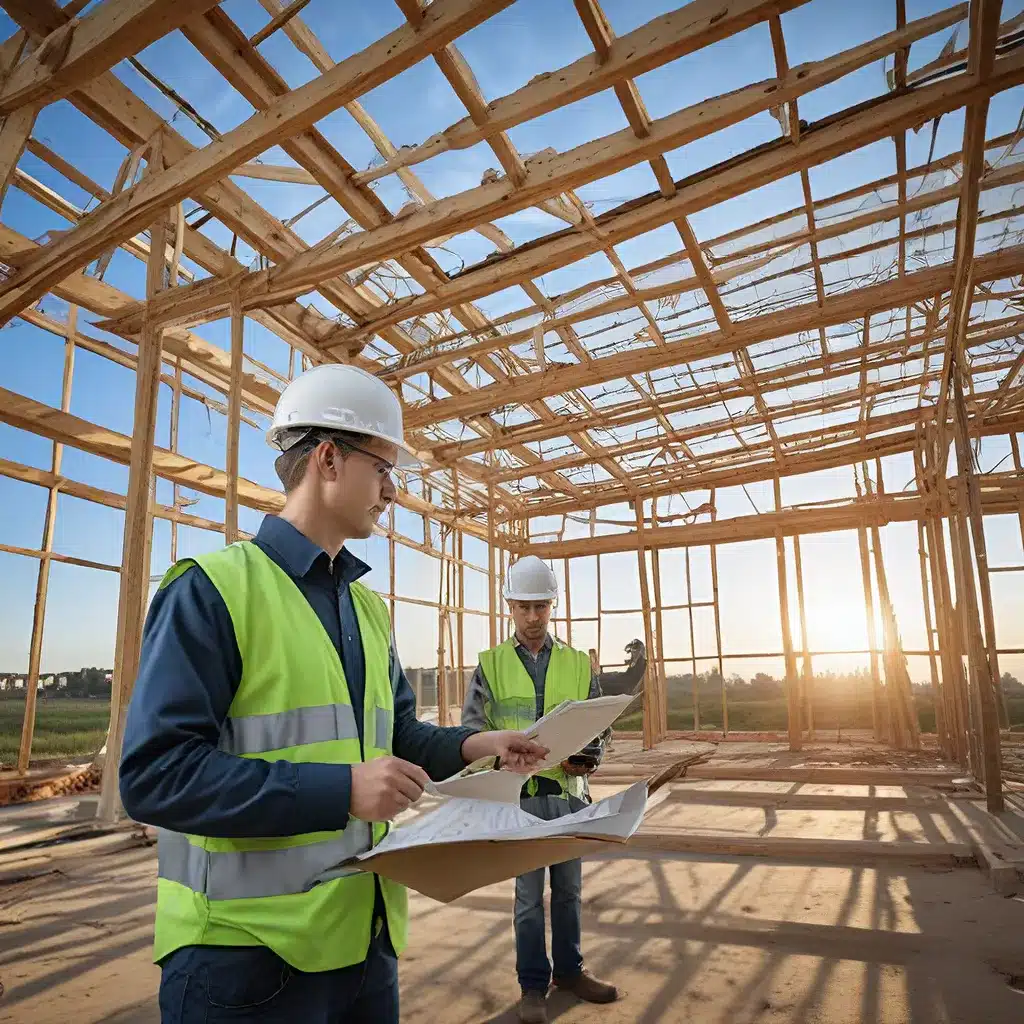
In the ever-evolving world of construction, I’ve got to say, we’ve come a long way, baby. From the good old days of hand shovels and wheelbarrows to the technological marvels we see today, this industry has undergone a radical transformation. And you know what? I’m here for it.
The Rise of Mechanization and Digital Disruption
Let’s rewind the clock, shall we? Back in the 19th century, the arrival of hydraulic and pneumatic devices was a game-changer. Suddenly, we had earth-moving equipment and other fancy gadgets that made our lives a whole lot easier. Talk about a productivity boost! Then, in the early 20th century, we saw the emergence of cherry pickers, concrete mixers, cranes, and power tools. And the cherry on top? The internal combustion engine, which replaced those pesky hand shovels and wheelbarrows with the likes of forklifts, tractors, and bulldozers.
But the real revolution, my friends, came in the latter part of the 20th century with the introduction of computer-aided design (CAD). As Trimble Constructible put it, this technology “changed construction irrevocably.” Suddenly, we could visualize those pesky clashes and interferences that used to haunt our dreams. No more guesswork, baby!
And then, just when we thought things couldn’t get any better, along came Building Information Modeling (BIM). This collaborative process allows all the project stakeholders to work together on a detailed 3D model, ensuring that every little detail is accounted for. Talk about a game-changer! As a general contractor, I can tell you that this has saved us countless resources, as construction doesn’t even begin until every party has signed off on the design.
The Rise of Off-Site Fabrication and Mobile Technology
But wait, there’s more! The construction industry has also embraced the wonders of off-site fabrication. As Trimble Constructible explains, massive components like heat exchangers are now being built in the comfort of a vendor’s shop, arriving on-site ready to be plugged in. This not only improves efficiency and productivity, but it also reduces waste and increases the return on investment. Talk about a win-win-win!
And let’s not forget about the mobile technology revolution. Smartphones and tablets have transformed the way we manage construction projects. Now, all the parties involved can work together using the same consolidated information sources, ensuring that no one is left out of the loop, no matter where they are. Plus, with real-time analytics, we can catch those pesky issues before they become major headaches.
The Rise of Sustainable Building Materials
But my friends, the revolution doesn’t stop there. As the construction industry looks to reduce its carbon footprint, we’re turning to some pretty nifty sustainable building materials. Imagine a structure made from straw bales, rammed earth, or even Hempcrete – a concrete-like material made from the hemp plant. As Trimble Constructible points out, some of these materials actually absorb and trap carbon dioxide, making them carbon-neutral. And the best part? Using these sustainable materials can not only reduce construction costs but also improve structural energy efficiency and increase property value. It’s a win-win-win for the industry, the occupants, and the planet.
The Rise of Robotics and Precision Technology
Now, let’s talk about the future of construction – and I’m not talking about flying cars (although that would be pretty cool). No, my friends, I’m talking about the rise of robotics and precision technology. As Headlight explains, automated machines can now perform tasks like welding and cutting materials with unparalleled accuracy and precision. And the best part? It’s helping to reduce the risk of human error and eliminate those pesky safety hazards.
And let’s not forget about Robotic Total Stations (RTS). These electronic theodolites can be remotely controlled from a distance, allowing a single person to complete the layout with greater efficiency, improved accuracy, and fewer mistakes. As Trimble Constructible puts it, this technology is a game-changer, reducing labor costs and ensuring that your project runs like a well-oiled machine.
The Rise of Cloud Computing and Digital Twins
But the revolution doesn’t stop there, my friends. Cloud computing has revolutionized the way we store and share project data. As Trimble Constructible points out, we’re no longer limited by hardware constraints. Nope, now we can outsource our data processing and storage to powerful machines accessible from anywhere. And the best part? Real-time data is available to all stakeholders, making collaboration a breeze.
And let’s not forget about those digital twins and digital as-builts. These virtual replicas of physical assets give us real-time data throughout the entire construction and maintenance process. As the experts at Science Direct explain, these digital representations can be used to predict carbon footprints, simulate scenarios, and collect real-time data via installed sensors. Imagine being able to make faster decisions about operational and maintenance costs, all thanks to a little digital wizardry.
The Future is Bright, My Friends
Whew, that’s a lot of technological innovation, am I right? But you know what they say, the future is bright, and the construction industry is leading the charge. From sustainable building materials to precision robotics, the possibilities are endless.
So, what’s next on the horizon, you ask? Well, my friends, I predict even more connection between stakeholders and increased tech adoption among teams. And with the help of a reputable general contractor, you can bet that the results will be better than ever.
So, what are you waiting for? Embrace the revolution, and let’s build a brighter, greener future together!
Related posts:
No related posts.




